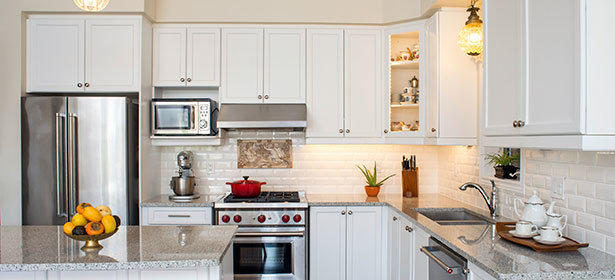Electrical Safety in the Kitchen
- Mar, 31, 2017
- steve
- Uncategorized
- 1 Comment.
Tips for Electrical Safety in the Kitchen
The kitchen is the heart of most peoples houses, it’s the centre of activity, If you’ve ever hosted a party, you might have found that everyone ends up gathering in the kitchen, and it’s the place for a morning coffee or a production line for Christmas baking.
The kitchen is an area in the home where there’s always a mix of water and electricity and we all that that this is a lethal combination. So it’s important that fixed electrical equipment is installed correctly, and that you use appliances in your kitchen with care.
Avoid water contact with outlets.
Keeping things clean and dry is a major kitchen electrical safety tip. With all the water that is splashed around the kitchen. To avoid water coming into contact with electricity, make sure that your sockets or switches are fitted at a safe distance (at least 30 centimetres horizontally) from the sink. Be extra cautions when using liquids around electric cables and keep spills away from the outlet. If appliances such as fridges, dishwashers and washing machines are fitted under worktops, getting to sockets may be difficult. Ideally, these appliances should be controlled by a switched fuse-connection unit mounted above the worktop or in an accessible place where you can reach it easily.
Keep cables away from hot areas
It’s a good idea to watch where your cords are coming from and going to. If you are not careful a cord from a blender can soon come in contact with a hot stove surface or a toaster oven. If it is left unattended the protective layer on the outside of the electrical wire will begin to heat up and melt, This damage will expose the inner wires and it could easily result in an electrical fire.
Don’t overload electrical circuits
Fridges, freezers, ovens, Kettles and microwaves require a high amount of power. Their electrical demand can put a lot of stress on circuits in the home. By putting too many appliances on the same socket and circuit it will cause the circuit breaker to trip. While this may seem like a temporary inconvenience, it is an indication of a larger problem. If this is an on going problem in your kitchen, it may be time to reorganize the arrangement of cables or upgrade your electrical circuits. The damage to electrical installation will cost a lot more in the long run.
RCD Protection
If a socket in the kitchen, or anywhere else in the house is likely to be used to supply portable equipment outdoors, it should have an RCD fitted. Under the national safety standard, all sockets in new electric installations and any new sockets added to an existing installation must be protected with an RCD.
Tips for keeping the kitchen electrics safe:
- Don’t overload the sockets with too many appliances; this is a major cause of fire.
- Never touch a socket or switch with wet hands.
- If an appliance such as an iron is still warm after use, never wrap the cable around it.
- Always unplug appliances before checking for faults or attempting a repair.
- Don’t leave the home if either the dishwasher or washing machine is in use.
Check that cables on items such as toasters and microwaves are in good condition; split cables can cause shocks and sparks can cause a fire.
Keep the space in the kitchen clean
Everybody likes a clean kitchen and not only is it a hygienic way to operate, it’s also the safest. There is no shortage of crumbs and bits of food flying everywhere. Some of us are cleaner cooks and bakers than others but either way, it’s impossible to keep track of every little crumb and food morsel. If there are an increasing number of crumbs in the bottom of the oven, especially behind the fridge or stove each time the oven is on, there is a chance of it lighting the accumulated crumbs on fire. To lower the risk of a fire, it’s a good idea to pull out the large appliances in your kitchen a couple of times each year to give them a good clean.


There is so many more electrical appliances in the kitchen area nowadays. I remember when i was a child in my old house there was only two socket outlets in the kitchen, unlike today there are normally at least six outlets. We are 247 Electric we carry out domestic installation work in kitchens including extra sockets.